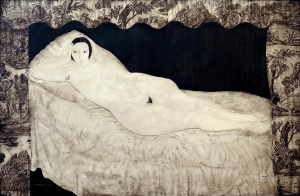All sessions unless otherwise noted will take place in the Cochrane-Woods Art Center (CWAC) Room 156 on Fridays, 4:30-6:30 pm.
October 11 Special Event
Jiayi Zhu, PhD student, Department of East Asian Languages and Civilizations;
Sylvia Wu and Sizhao Yi, PhD students, Department of Art History
“Cave art from Xi’an to Dunhuang: Observations from the UChicago/Getty Traveling Seminar”
October 25 Event Co-sponsored with APEA
Peter Chen, MA student, Divinity School
“Religious or Secular: Feng Zikai in the Formation of ‘China’”
Respondent: Minori Egashira, PhD student, Department of Art History
Paper will be pre-circulated one week in advance.
November 1 Cultural Event
Halloween Party with An Art Historical Theme
Theme: TBD; Time: evening, TBD; Venue: Professor Chelsea Foxwell’s
November 8
Michael J. Hatch, PhD, Assistant Professor of East Asian Art History, Department of Art, Miami University
“Epigraphy, Ruan Yuan, and the Haptic Imagination in Early Nineteenth-Century Chinese Painting”
Respondent: Meng Zhao, PhD candidate, Department of Art History
November 15
Mew Lingjun Jiang, MAPH-TLO’20 Art History
“Abstract Expressionism” and “Minimalism” in the 1600s-1800s Japan: Iconography and Semiotics in Chihōfuda Regional Japanese Playing Cards of the Latin-Italo/Portuguese Suitmarks”
Respondent: Robert Burgos, PhD student, Department of History
Paper will be pre-circulated one week in advance.
November 22
Jennifer D. Lee, PhD, Assistant Professor, School of the Art Institute of Chicago
“Image and Thought: Wu Guanzhong’s Abstract Expression, 1979-1983”
Respondent: Orianna Cacchione, PhD, Curator of Global Contemporary Art, Smart Museum of Art
We look forward to your attendance and hope you will share this with all who might also be interested in joining our community. Please direct questions and inquiries to Zhenru (zhenru@zhenruzhou.com) and Yin (yinwu@uchicago.edu).
Wu Guanzhong, Song of Autumn, 2007






